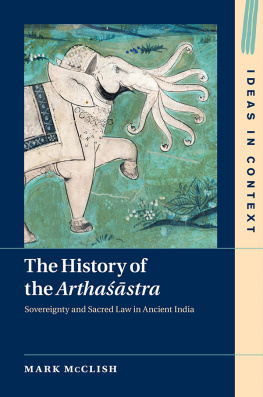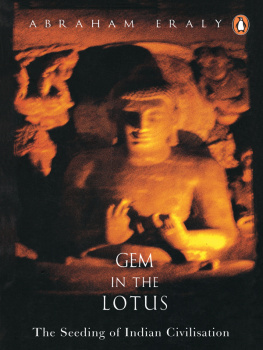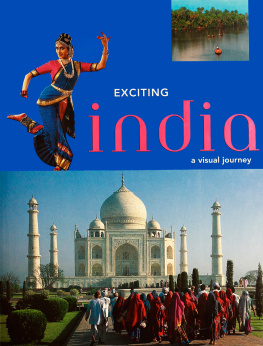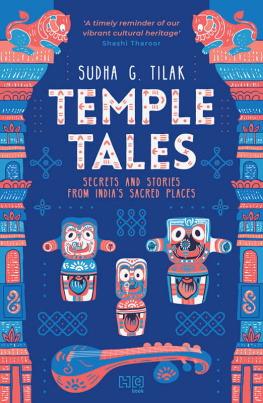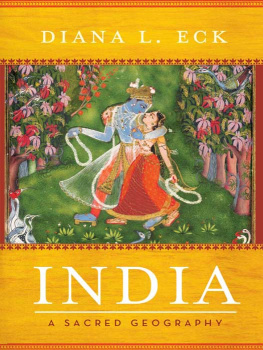This book is a pilgrimage through the consciousness of Indian civilization. The parikramas, the temple motifs, the sacred geographies, and ancient traditions are deftly woven by Anuradha into the story of a civilization built layer upon layer over thousands of years.
Sanjeev Sanyal
Economist, author of Land of the Seven Rivers
A beautiful inspiring story and personal pilgrimage that teaches us how great Hindu temples unfold the secrets of the highest art and yogic spirituality relevant to each one of us. Anuradha Goyals book Lotus in the Stone is a sacred journey through the inner time and space of these extraordinary temples to the Eternal and the Infinite.
Dr Frawley
Vedic scholar and author of numerous books
An amazing book about Indian ancient traditions that resonate with our lives as if they recall events of yesterday. This is not just a book. It is a very reflective commentary on how ordinary people keep extraordinary traditions alive with respect, grace and a consideration for the Other. If one can respect diversity within in ones own cultural & religious traditions, one can also respect similar diversity of other faiths. A must-have for every student of inclusive, assimilative and living traditions.
Prof Anil Gupta
IIM Ahmedabad (retd), founder, Honey Bee Network
India as a civilisation is united by its rich culture, pilgrimage centre, temples, our historical narratives, our great epics beneath the surface of a very diverse, multi-ethnic, multi- language, multi-custom society! Lotus in the Stone explains this beautifully, opening my eyes to our unity!
T.V.Mohandas Pai
Aarin Capital Partners.
No Indophile can afford to miss Anuradha Goyals latest book Lotus in the Stone Sacred Journeys in Eternal India . She interweaves a rich tapestry with threads drawn from our ancient spirituality, history and culture and colours it with a unique geographical context. At its very essence, this book re-affirms the enduring timelessness of Indias living culture and speaks of Indias cultural unity, transcending geographical distances as well as apparent differences.
Dr. Sumita Misra
Senior Advisor, Prime Ministers Economic Advisory Council, Author, Poet, Chair, Chandigarh Literary Society
Lotus in the Stone is a marvellous book by Anuradha Goyal on the invisible threads that bind Indias living civilization. Ostensibly a book on travels to sacred places, it goes beyond the recounting of the amusing experiences that constitute such journeys, to communicate the faith and connections to roots deep in the past. It shows Indias sacred landscape as a veritable Indras net, where each place reflects something of all the other places.
Prof. Subhash Kak
Author of The Circle of Memory and other books.
This is a fascinating book. I have not read anything quite like this. Bharat, that is India, thrives in its people and its traditions. This is the legacy of samskriti or culture, carried beyond Indian shores to wherever Indians travelled. To appreciate and document this, a person has to travel beyond the dotted line, to where history and geography seamlessly weave together in this land of ours. I loved every word of the many lotuses in the many stones.
Bibek Debroy
Economist, author and translator of the Mahabharat
First published in India 2020
Copyright 2020
Anuradha Goyal
All rights reserved. No part of this publication may be reproduced or transmitted in any form or by any means, electronic or mechanical, including photocopying, recording, or any information storage or retrieval system, without prior permission in writing from the publishers.
No responsibility for loss caused to any individual or organisation acting on or refraining from action as a result of the material in this publication can be accepted by Garuda Prakashan or the author.
The content of this book is the sole expression and opinion of its author, and not of the publisher. The publisher in no manner is liable for any opinion or views expressed by the author. While best efforts have been made in preparing this book, the publisher makes no representations or warranties of any kind and assumes no liabilities of any kind with respect to the accuracy or completeness of the content and specifically disclaims any implied warranties of merchantability or fitness of use for a particular purpose.
The publisher believes that the content of this book does not violate any existing copyright/intellectual property of others in any manner whatsoever. However, in case any source has not been duly attributed, the publisher may be notified in writing for necessary action.
Cover Design: Rakesh Chaudhary
Published by
Garuda Prakashan Private Limited
Gurugram, India
www.garudaprakashan.com
www.garudabooks.com
Printed in India
For
Shashi The yantra, mantra and tantra of my life.
The greatest knowledge and the greatest riches man can possess are hers (Indias) by inheritance; she has that for which all mankind is waiting .
Sri Aurobindo
Contents
Stepping Out
Subhashitamala
A distance of thousands of miles can be covered even by a tiny creature like an ant, if it keeps on walking slowly but consistently.
I n the cold January winter, I was standing amidst a million strangers in Prayag, observing the transient world from a transient land as part of a cyclic event. The Kumbh Mela is a microcosm of the world, as it is created, lived, and dissipated. On the temporary flood plains created by the receding waters of the Ganga and the Yamuna, at the point of their confluence, a miniature world comes up for a couple of months. People from all over the country come here to spend time for various reasons. From curious tourists who want to see the Naga Sadhus to sadhus from different akhadas who come here to fulfil their periodic meeting with the world and with other sadhus, all kinds of people turn up at the Kumbh Mela. It is the longest living cultural tradition of India. The scale may have gone up or down during different phases of history, but it has continued unhindered. Its power lies in the fact that no one owns it, and at the same time, it belongs to everyone. It belongs to the one who turns up to be a part of it. No one invites anyone, and yet, everyone turns up on the banks of the holy rivers on the right date and time. In it, I also saw the power of the panchang , the Indian calendar in full force. Most of us who grow up in urban settings do not even know our birthdays by the panchang, but here, you see half of humanity turning up based on that very panchang. Is it the panchangs way of saying it still rules this land?
At the Kumbh Mela, I saw human behavior at its best ever. I was traveling alone and on the first day, I held my bag close to my chest. If someone decided to snatch it, it may be easier to find a needle in a haystack than a thief at the Kumbh Mela. Getting lost in the Kumbh Mela was a phrase embedded in our psyche by our filmmakers. Towards the end of the day, I loosened up and held my bag as freely as I would hold it anywhere else. By the next day, I could comfortably leave it on the side while having my chai at a tea stall. I knew no one was going to pick up my bag. This transformation in my own behavior in less than twenty-four hours was nothing less than magic. Hundred thousand so-called strangers around you, and you feel you are amongst your own familythis seems unbelievable, incomprehensible, until you feel it. I do not recall anyone touching me even by mistake during those few days that I was walking around the mela grounds, despite all the crowd. Policemen responded to queries with folded hands. There was free food for everyone, everywhere. Even at food stalls and chai shops, no one asked for money. When I tried to pay before I ate, they requested me to first eat and then pay, and only if I liked the food.
Next page



